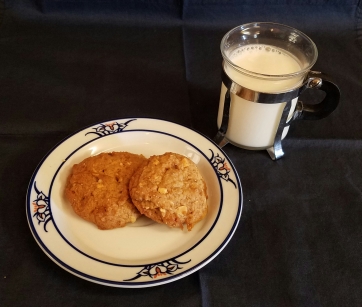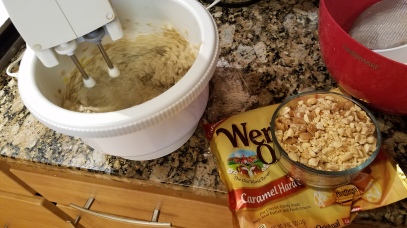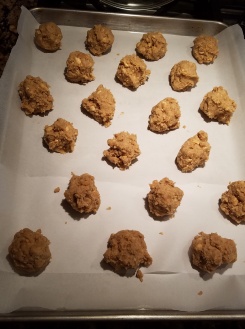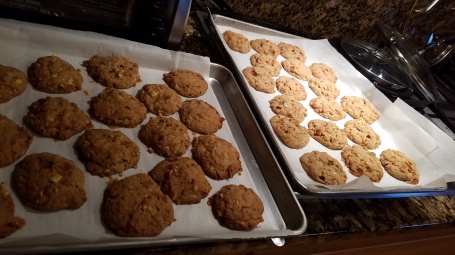Having common interests is not so much the basis of a successful relationship as having things you do and enjoy together. For my spouse and me, travel and food are among the things we enjoy sharing the most. We will pretty much go anywhere and try most any food – cooking it or eating it – as a couple. And though I know I can sometimes get a little competitive in my cooking (if my husband cooks something I usually cook and does better than I would!), cooking is one of the most relaxing activities for me.
I also always challenge myself to take common recipes and to make as healthy a version of them as I can by reducing fats and adding whole grains, vegetables, etc. Usually keeping my son’s Type 1 diabetes in mind.
So when I heard my sister Ranjana raving about my sister Nandini’s “Shrimp with Kaffir Lime Leaves”, I had to find out more. Nandini is an amazing cook, and cooks really fast too. She often cooks unusual and complicated Indian dishes that are completely beyond me. But this recipe sounded easy and quick, which, for me, is how cooking should be, if at all possible. Plus I adore the smell of kaffir lime leaves in food.
My husband and I were planning a quick trip to visit our son at the university where he is a PhD student. I always carry food when we visit our children, and listening to Nandini describing the recipe to me over the phone, it sounded as if we had all the necessary ingredients at home and I decided to try this recipe out. We also had all kinds of squashes and chili peppers growing in our garden. I love cooking Thai pumpkin curry so I decided to merge the recipe and our home grown vegetables.Needless to say, our son, who usually sees us arriving with cookies and other dry comestibles, was extremely pleased when I handed the container of fragrant food to him.
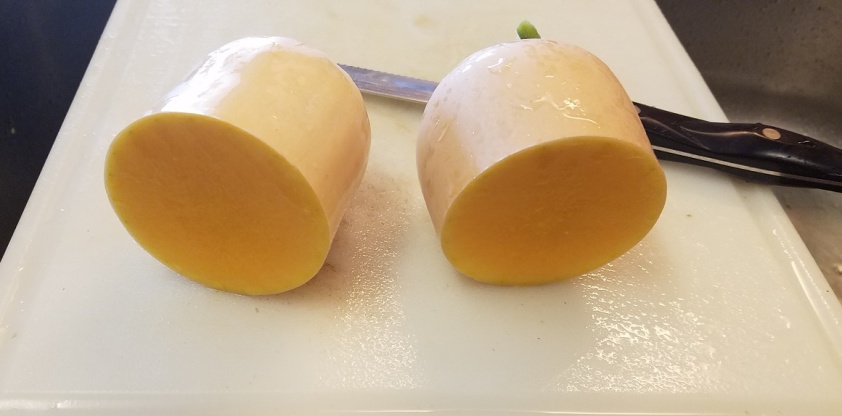
I am sure most Thai people would object to my calling this a Thai recipe, but I think the look and taste were close enough that I will call it
“Thai Style Pumpkin Curry with Shrimp”
Ingredients:
2 lbs shrimp cleaned, washed and drained
2 ½ – 3 cups peeled cubed pumpkin, butternut or acorn squash
¾ -1 cup red, yellow or orange bell pepper cut into ½” slices
½ cup sweet onion cut into ½” slices
3 cloves garlic finely grated
2 tsp salt divided or to taste
2-3 tsp brown sugar or to taste
½ -1 tsp red pepper
½ tsp turmeric powder
10-12 Kaffir lime leaves
2-3 thick chili peppers seeded and sliced lengthwise – jalapeño or serrano
1 can 14 oz coconut milk (unsweetened)
3 oz (1/2 small can) tomato paste
3 TBS canola oil or some other vegetable/peanut oil
Add the garlic, red pepper, turmeric and 1 tsp salt to the shrimp. Mix well and set aside.
Mix the coconut milk and tomato paste well together. Set aside
Bring 1 cup of water to boil in a sauce pan. Add the pumpkin and 3-4 TBS of the coconut-tomato paste. Stir well and bring back to a boil. Cover and cook on medium heat for about 5 minutes till the pumpkin is barely cooked but not soft. Set aside.
Heat the oil on high heat in a large flat bottomed nonstick pan.
Add the shrimp and sauté on high till the shrimp turns opaque and starts getting golden along the edges.
Add the onion and bell pepper and continue to stir and sauté for about 2 minutes.
Reduce heat to medium.
Add the coconut milk-tomato mixture, the chili pepper slices, and the pumpkin in its sauce to the pan.
Add the sugar (if used) and the remaining alt and stir well. Bring back to a boil.
Cover and cook on medium heat for another 5-6 minutes or till the vegetables are cooked but not soggy. Stir occasionally and make sure it is not sticking to the bottom or burning. Add a little water if necessary.
Add the kaffir lime leaves, stir and take off from the heat. Cover and let sit for about 5 minutes before serving.

Delicious!

